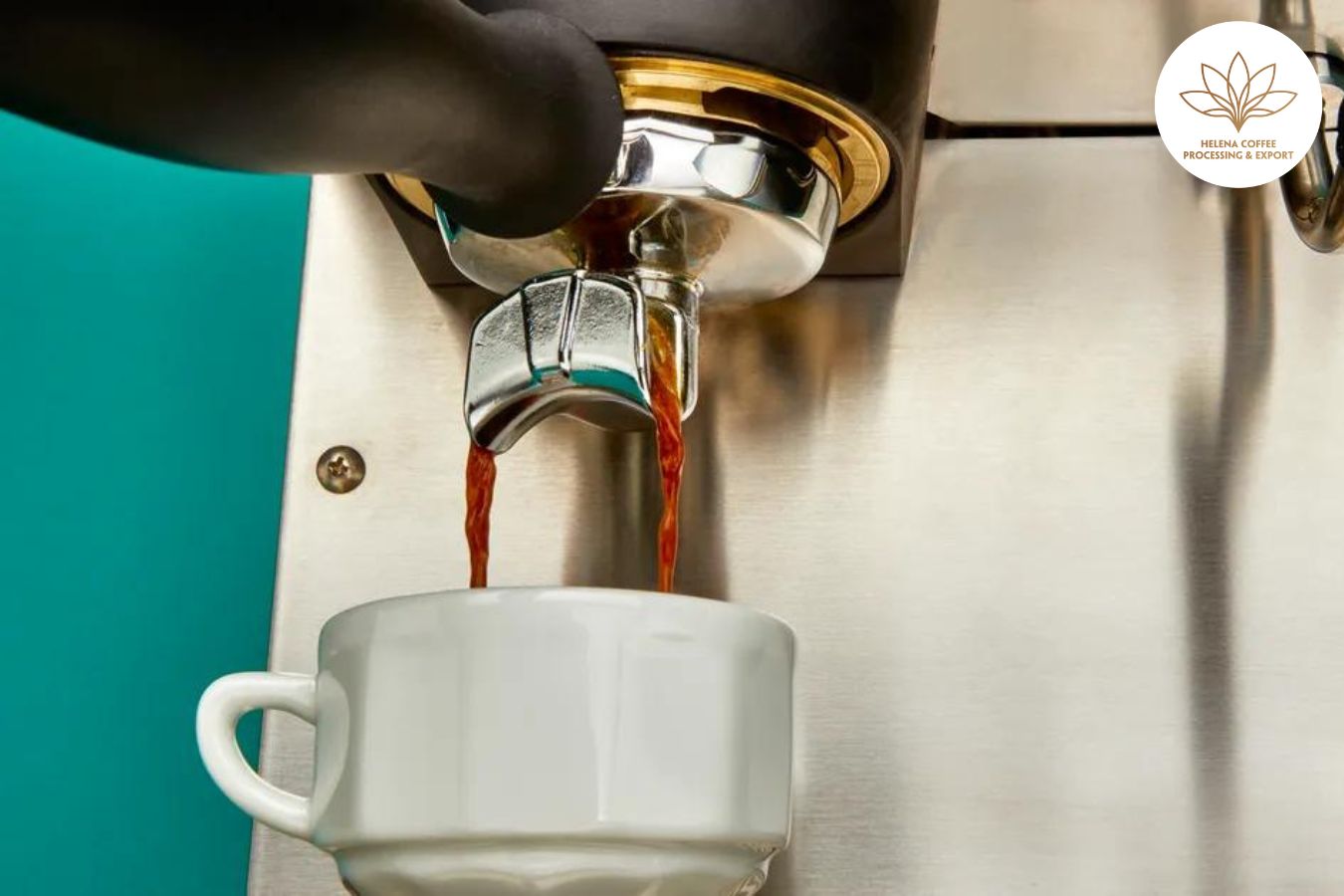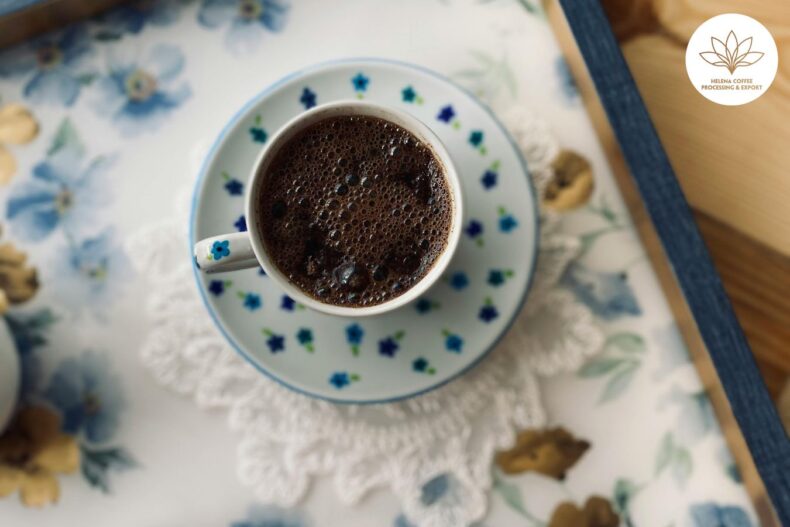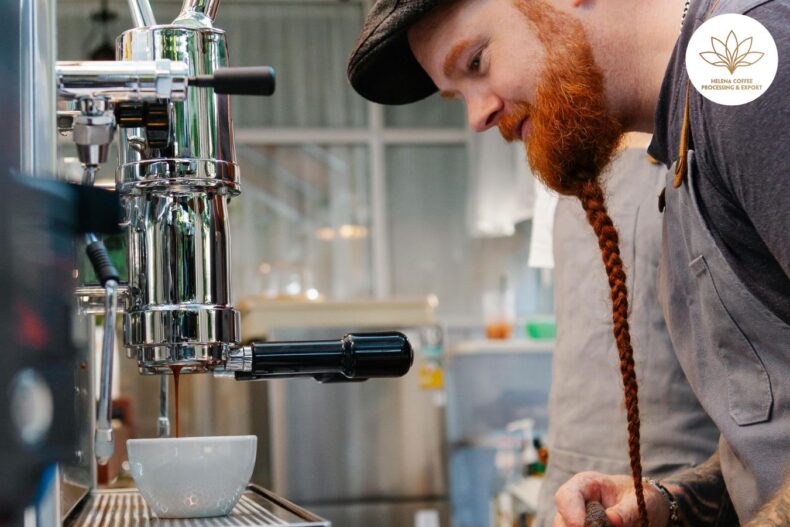
The espresso machine is often considered the heart of a coffee shop – it’s the singular piece of equipment that drives drink preparation, workflow , and sales.
Now, in recent years more attention has been paid to form than function. Although technical evolution is a constant for espresso machine manufacturers , design and style are increasingly a priority.
The design of espresso machines is becoming more modern and more companies are putting them in the spotlight to attract customers and showcase the latest technological innovations.
How have design and brand image evolved in the espresso machine market ? What place does personalization occupy? To find out more, I spoke with two coffee professionals from Dalla Corte . Read on and find out what they told me.
Brief history design of espresso machines
Since the first espresso machine patent was filed in 1884 , coffee makers have focused primarily on functionality over style and visual impact.
Angelo Moriondo’s 19th-century prototype had two large boilers that produced water and steam, making it a huge, bulky machine. About 20 years later, Desiderio Pavoni and Luigi Bezzerra introduced the first steam rod, which helped reduce the size of boilers.
In the early 20th century, however, art deco style machines became more common as the market evolved. This design style was considered more luxurious, with elegant geometric patterns and a focus on craftsmanship.
A few decades later, in the 1940s, the design was reinvented again. Italian coffee shop owner Achille Gaggia designed a lever machine with chrome fittings, which represented a more modern look for the espresso machine . The lever system allowed Gaggia to further reduce the size of the boiler and increase the maximum pressure to 10 bars.
Although the innovation did not end there. In the 1960s, Ernesto Valente designed the Faema E61. This machine included a motorized pump and heat exchanger that helped pave the way for the design of automatic coffee makers. The E61’s small size and stainless steel features made it an iconic piece of coffee equipment.
Personalization, visual identity and customer journey
It is no secret that the hospitality sector is competitive and that it is essential to differentiate yourself. As soon as customers walk through their doors, brands have to demonstrate why they are unique.
In recent years, we’ve seen this reflected in the enormous amount of customization that espresso machine manufacturers have made available to coffee brands.
Davide Valenziano is the coffee director at Dalla Corte . He says that to remain competitive, companies can focus on personalizing different aspects of the consumer experience.
“The key element of our job is to offer customers the best cup of espresso” he says. “As such, Dalla Corte has been committed over the years to providing the barista with the best technology possible.”
“With Flow Control we have given baristas the opportunity to personalize and recreate recipes. “With the Dalla Corte system, baristas can control [and personalize] every step of the customer’s coffee journey.”
Tailoring or personalizing the consumer experience makes customers more likely to return to a business. According to a Hubspot study, around 80% of consumers are more likely to purchase products when companies or brands offer personalized experiences .
The visual design
Now, in addition to adapting brewing variables and extraction profiles to offer unique drinks and personalize the customer’s coffee experience, the new espresso makers also allow for another type of customization: visual design.
A few years ago, brand options were limited. They could choose between white or black. Today, however, manufacturers offer various ways to customize machines.
Valentina Dalla Corte is product line director at Dalla Corte. She explains that design plays a key role in the consumer experience because it helps create the ambiance of a coffee shop.
“Coffee shops are paying more and more attention to design details to offer their customers a unique experience,” he says.
Since the espresso machine is often the center of attention of the bar, it is important to consider how its design contributes to the customer experience.
“The coffee machine is becoming an element of the store’s own design, so companies want to customize it according to the style of the store,” explains Valentina. “They can add special materials or textures, like wood or leather, or just add their logo.”
Including custom materials in your coffee maker can help develop a more cohesive visual identity for your coffee shop . For example, wood accents can give your business a warm and welcoming feel, while metal has a more modern and minimalist look.
Personalization and luxury brands
The concept of a luxury brand is not new in the coffee sector. In the late 1990s, capsule company Nespresso set out to transform its office coffee brand into a luxury consumer experience.
Inspired by the wine industry, former CEO Jean-Paul Gaillard created the Nespresso Club. Consumers automatically joined the club when they purchased the capsules, but the feeling of exclusive belonging elevated the brand.
In the following years, coffee brands have begun to realize that taking advantage of luxury and exclusivity can convey quality and gain followers among consumers.
“With the Icon, Dalla Corte not only offers quality in extraction,” explains Davide. “Also, we are committed to offering customers very personalized experiences, trying to tune in to the needs and preferences of each one.”
A marketing strategy
In 2020, a Forbes study found that 98% of marketers said adding personalization or customization to their brand helped strengthen relationships with consumers. For coffee shops, leveraging a custom-designed luxury espresso machine as the centerpiece of their marketing strategy can be an extraordinary way to capitalize.
“The espresso maker is center stage. It is the point of contact between the barista and the coffee lover,” says Valentina. “It is where the customer can establish a connection between the brand and the quality of the coffee.”
“With the Icon, our customers can choose from three options. There are standard and premium color selections .”
If you customize your espresso machine to include your brand colors, logo, or even other marketing materials , it will be much easier for customers to recognize your brand from a distance. A high-quality machine will also communicate a commitment to quality.
“Cafes can change the materials of some elements of the Icon, including the filter holders,” explains Valentina. “The back panel can then be installed in wood (dark or light) or leather. “All materials include the possibility of customizing the brand.”
FAQs:


